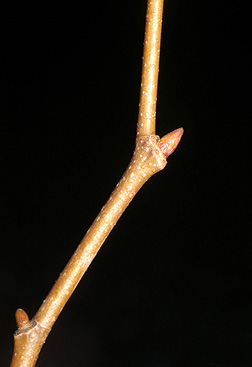American sycamore Platanaceae Platanus occidentalis
Leaf:Alternate, simple, palmately veined, 4 to 8 inches wide, ovate in shape, with three to five lobes, margins coarsely toothed, petiole bases encircle and enclose the buds, veins may be pubescent below.
Flower:Species is monoecious; imperfect, both male and females are very small and appear in dense round clusters, typically a single cluster to a stalk, appearing with the leaves.
Fruit:A spherical multiple of achenes borne on a 3 to 6 inch stalk. Each seed is tiny, winged, and 1/2 inch long; maturing in November, disseminating in late winter.
Twig:Obviously zigzag, quite stout and orange-brown in color; leaf scar surrounds the bud and the stipule scar surrounds the twig; terminal bud is absent; lateral buds are reddish, resinous, with a single, cap-like scale.
Bark:Thin, mottled brown, green, tan and white; older stems are gray-brown and scaly. The most striking feature of this tree, often referred to as "camouflage" bark that readily exfoliates.
Form:A very massive tree with heavy, spreading branches with obviously zigzag twigs reaching up to and over 100 feet tall. In winter, the persistent fruits resemble Christmas tree ornaments.







Notes: